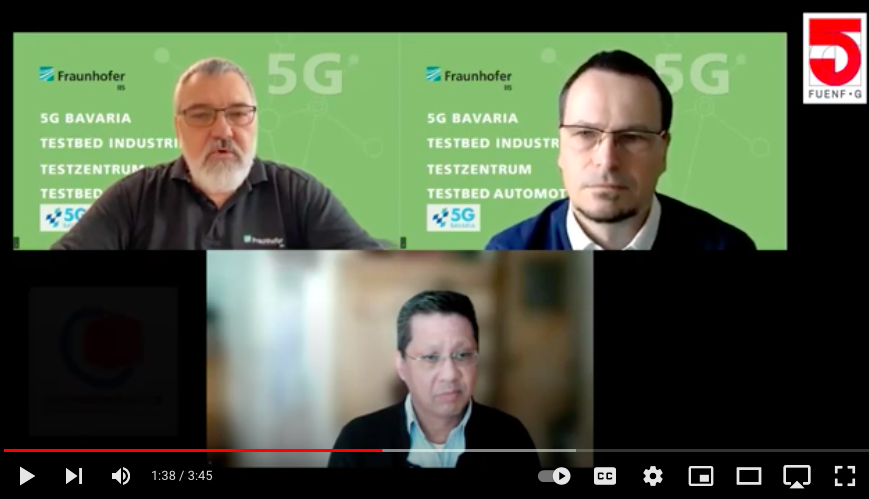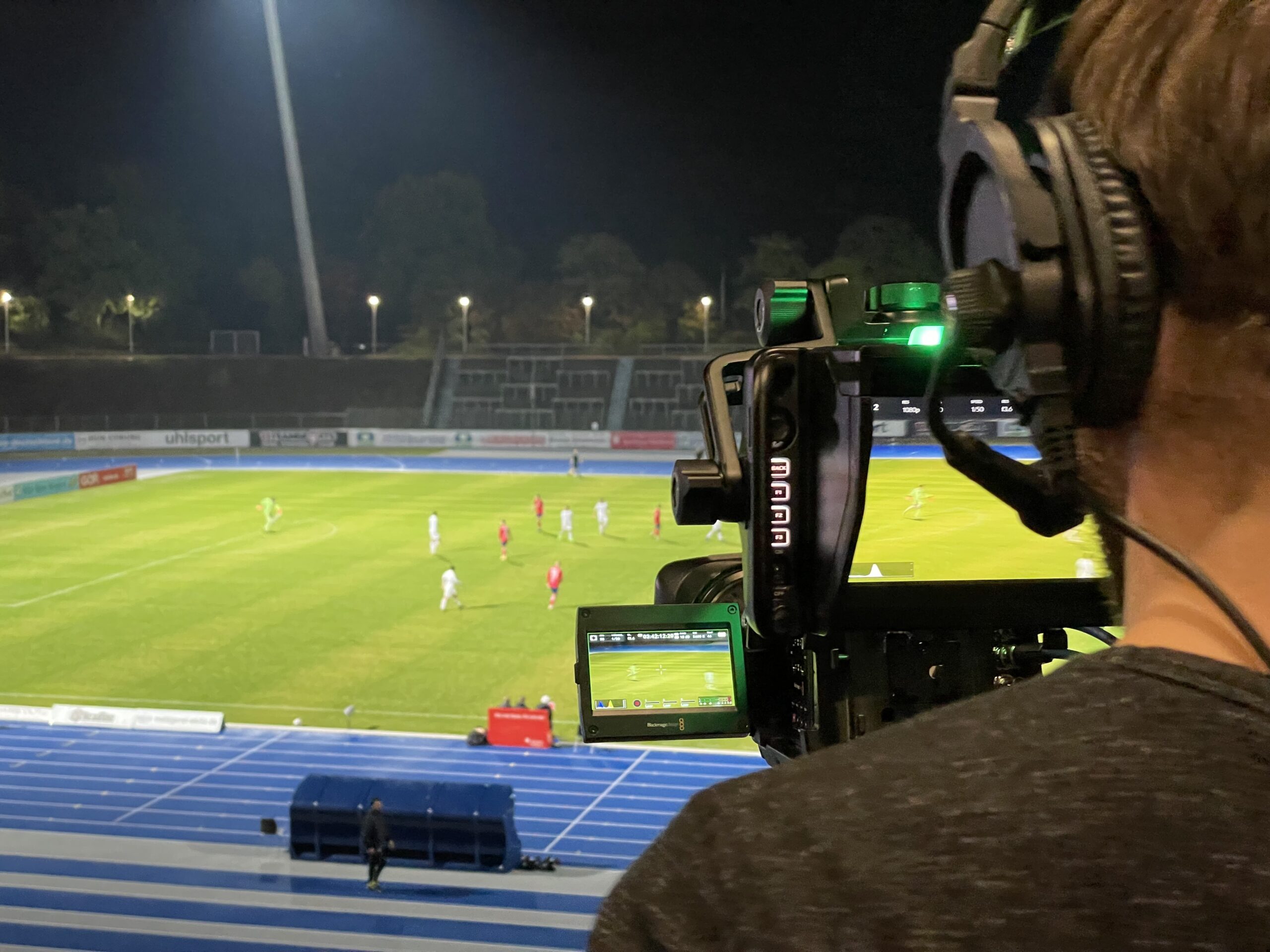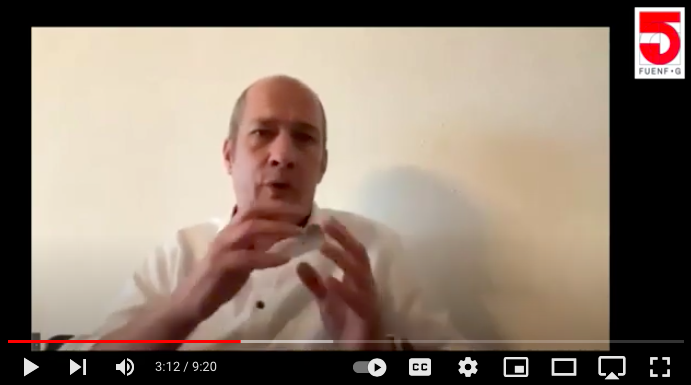More and more vehicles have an invisible aura around them: They send and receive data on a wide variety of frequencies. Rarely enough, these are 5G frequencies – 6G is only in the distant future. (Image: shutterstock_1019141671)
While everything still revolves around the fifth generation of mobile communications, Fraunhofer IZM is already working on 6G. Is this a measure to replace 5G, to establish it or simply to speed things up in terms of latency?
While we are talking about a data rate of up to 20 Gbit/s and a latency of around 1 ms for 5G, the starting signal for the next generation of mobile communications has long since been given. The focus is on one terabit of data to be transmitted in one second and a latency of about 100 µs – in other words, fifty times the data rate and one-tenth the latency of 5G. 6G opens up AI applications that use so-called digital twins, for example, to simulate reality in a virtual world without time or space constraints.
The driver of 6G development in Germany …
… is the BMBF’s 6Kom project, which is being coordinated by Fraunhofer IZM and worked on together with IHP, TU Berlin, TU Dresden and the University of Ulm. In addition, 15 companies from material and package development as well as chip design and manufacturing including test environments support the project via an industry advisory board, with users from the automotive, aerospace, agricultural machinery technology and telecommunications sectors underlining the implementation.
The goal is to develop a hardware basis for 6G and to research an efficient, broadband and miniaturized MIMO D-band module with integrated beamforming capability that ensures data rates of several terabits/second for 6G mobile communications as well as very precise localization applications. Likewise, possible application scenarios and their necessary specifications are the focus of the collaboration.
Technical differences between 5G and 6G
Frequency spectrum: up to 4G, all mobile communications took place in the sub-6 GHz range. Now, in 5G, it’s happening at 26 GHz, 28 GHz and 39 GHz, above the 6 GHz spectrum for the first time. In 6G, you’re in the terahertz range, presumably in the D-band (0.11 THz to 0.17 THz). In addition, 6G could also use VLC (Visible Light Communication), a promising optical communication approach for short-range communications that uses visible light between about 400 and 800 THz. Both 5G and 6G will continue to use frequencies below 6 GHz as well. Meanwhile, terahertz waves are already in technical use in a variety of ways, for example in body scanners at airport security checkpoints.
Data rate: 5G achieves a peak data rate of around 20 Gbit/s, whereas a maximum rate of more than 1 Tbit/s can be expected with 6G. Biggest difference between the data rate per user: For 5G it is about 100 Mbit/s, whereas for 6G it is about 1 Gbit/s.
Latency: It is well known that 5G has a latency of about 1 ms, while with 6G it is less than a millisecond, expected to be 100 µs. Ideal for applications such as holographic communication, virtual, augmented and mixed reality, and remote medical diagnosis and surgery.
Opinion
Dr.-Ing. Dr.-Ing. habil. Ivan Ndip vom Fraunhofer IZM in Berlin.
“Unfortunately, the specifications of 5G do not allow to build infrastructures and networks that ensure hundreds of gigabits/second and extremely low latency at the same time. Therefore, we believe that with 5G, true autonomous driving will probably not be possible at all. At the same time, we don’t even know if the specifications we have today for 5G will even be met. The necessary collective or networked intelligence does not yet exist. 5G also doesn’t allow us to have the data rates and latency necessary for this. That’s why we need 6G“, says Dr.-Ing. habil. Ivan Ndip from Fraunhofer IZM in Berlin.
Unlike 5G, 6G is being developed to meet all of these requirements simultaneously. The difference in the number of connected devices per square kilometer will probably be even greater, as will energy efficiency.
To date, there are no complete 6G solutions available today, but concepts are being explored to solve fundamental challenges. First, the enormous free-space attenuation must be overcome. To do this, multi-antenna architectures with hundreds of antennas per cellular base station must be built, so-called massive MIMO architectures (Multiple Input Multiple Output). In addition, it needs to be clarified how many basic elements must be constructed and interconnected so that long transmissions, very good beamforming and low energy consumption are possible.
So the first step is to work out new massive MIMO system architectures for efficient hardware realization. The second step is to implement the system architecture. Fraunhofer IZM is researching to provide the necessary packaging technologies for system integration, new terahertz-capable integrated massive MIMO antenna arrays, and new radio frequency design methods to make 6G front-end modules buildable.
Why 6G already when 5G isn’t even standard yet?
The plan is to introduce 6G probably from 2030, but there are still many open issues, such as on hardware development for mobile communications above 100 GHz, which is likely to access the D-band (0.11 THz to 0.17 THz) – an absolute novelty to use such frequencies for mobile communications. As a result, the research and development community is starting ten years early to address the software and hardware questions as far as applications. In five years, the definition of specifications begins, followed by trials. In the iCampus Cottbus (Innovation Campus Electronics and Microsensors Cottbus), Fraunhofer is conducting research with BTU Cottbus-Senftenberg and two Leibniz institutes on the appropriate networking technologies, including sensor technology. The institutes also act innovatively on sensory systems for 4.0 applications from the fields of industry, agriculture and smart health.
Background
BMBF project ForMikro – 6GKom
To research miniaturized and ultra-broadband microelectronic modules for future mobile communications, these industrial companies are involved in addition to the research institutes mentioned above: Heraeus, Isola, Schott, Contag, Infineon, Globalfoundries, Airrays, Alcan Ssystems, Rohde&Schwarz, Creonic, Hirschmann Car Communications, Ericsson, Continental, John Deere and Airbus.
The aspect of new business models with 6G is also interesting: since 5G, build and connect technology has played a very important role in the development of wireless systems for mobile communication applications. Since it is no longer trivial to manufacture a high-frequency front-end module for mobile communications, material, PCB and component manufacturers are challenged. This challenge opens up new business opportunities, especially for SMEs, which have had little exposure until 4G. Creative and new business models are conceivable and are forcing their implementation, which are also possible for 6G.
The frequencies in the range of 0.11 THz to 0.17 THz conceivable for 6G need smaller components and systems that can be integrated into existing devices/machines and introduce new upgrades without significantly changing the aesthetics or form factor of the devices/machines. As a result, countless new applications could emerge, especially in vertical industry, hinting at a veritable flood of new business models.
Parts of this text were translated with www.DeepL.com










Leave A Comment